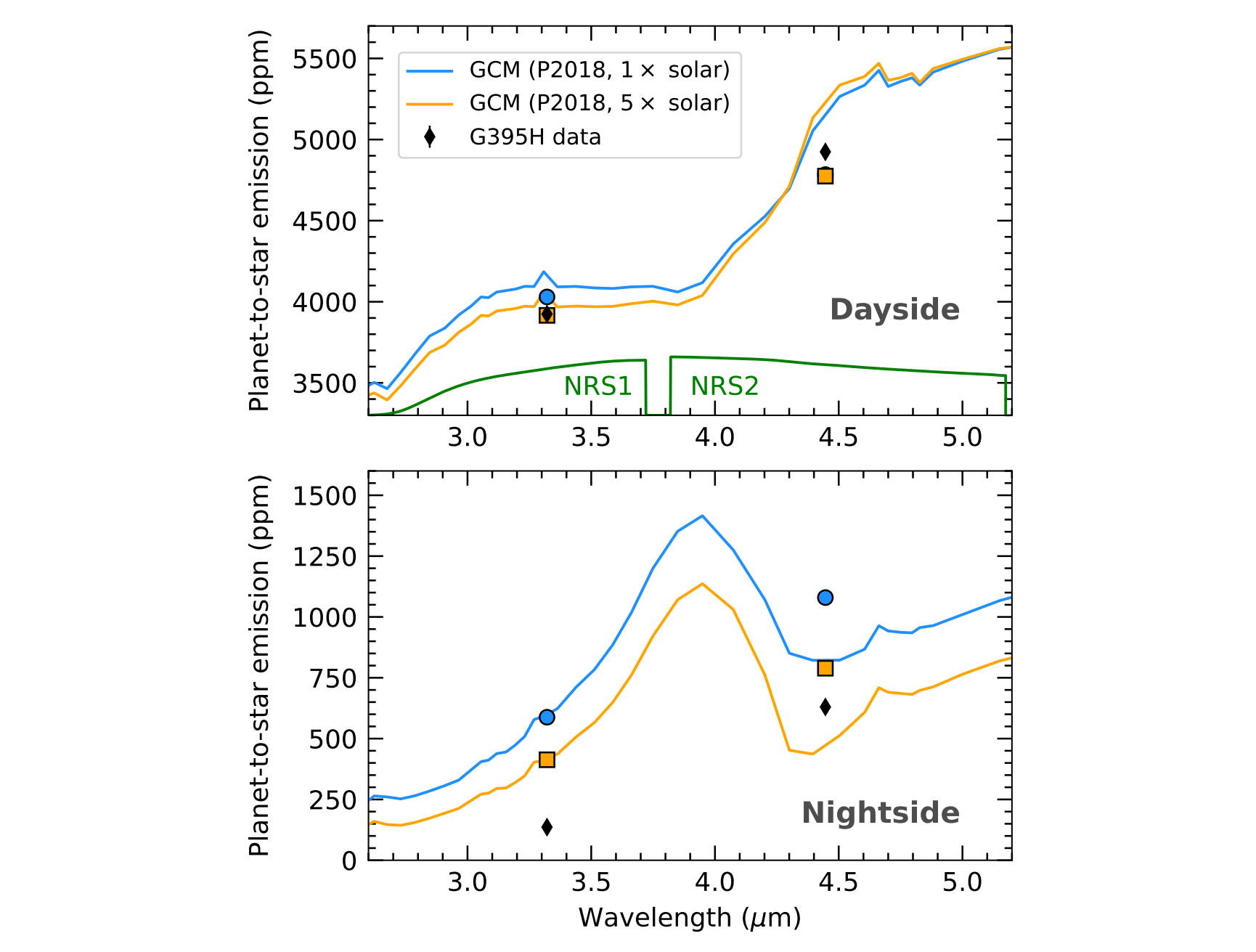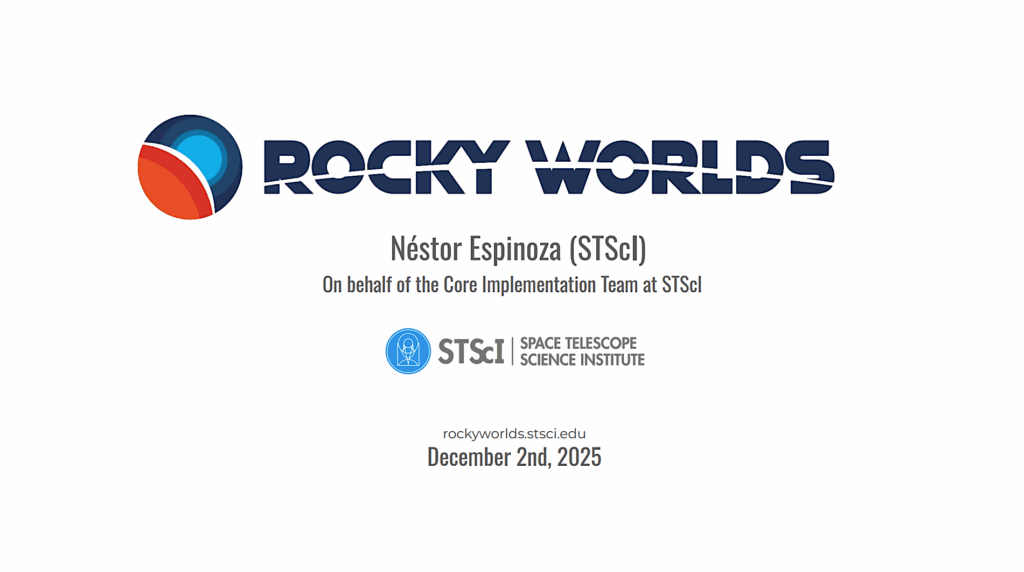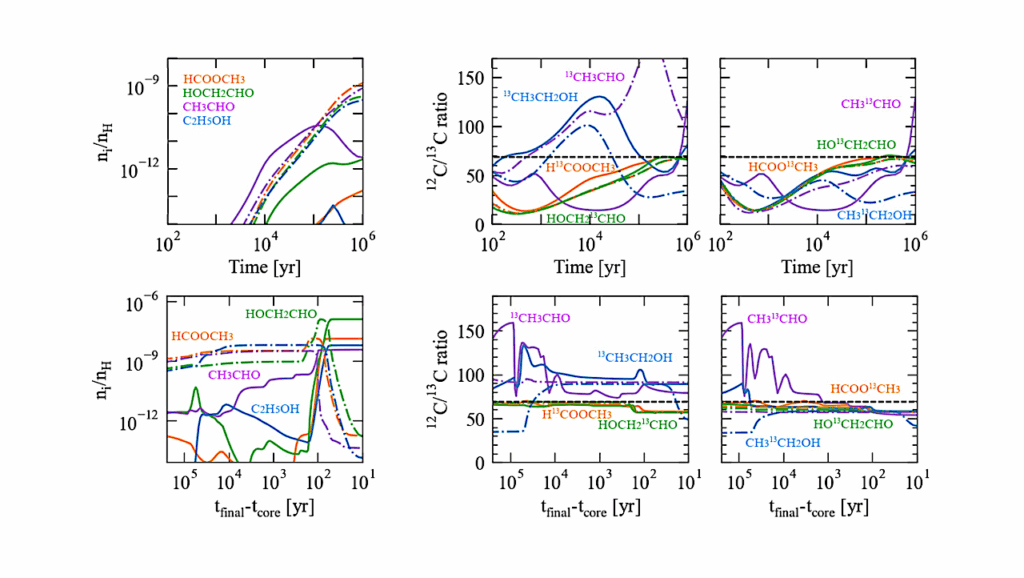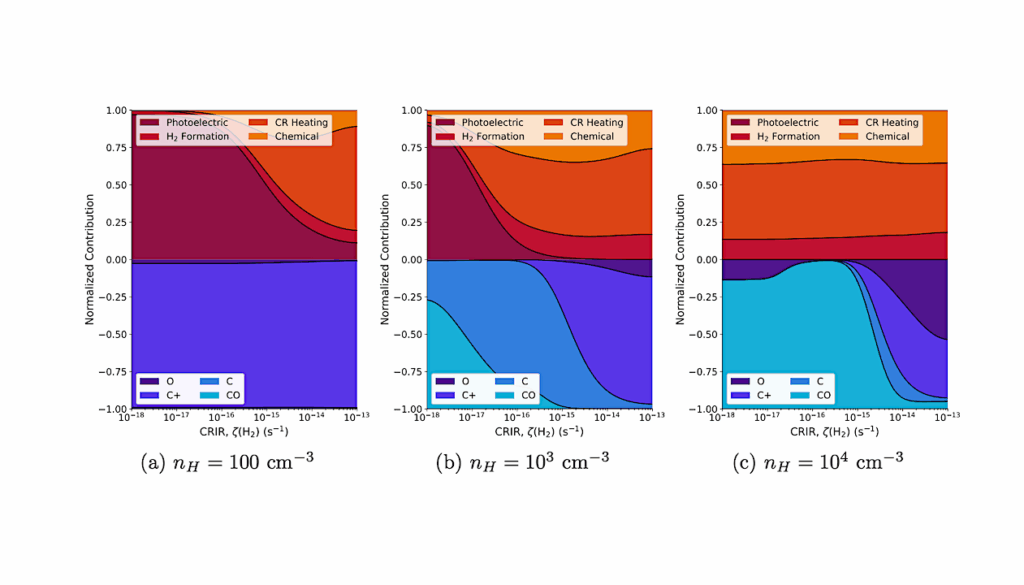A JWST NIRSpec Phase Curve for WASP-121b: Dayside Emission Strongest Eastward of the Substellar Point and Nightside Conditions Conducive to Cloud Formation

We present the first exoplanet phase curve measurement made with the JWST NIRSpec instrument, highlighting the exceptional stability of this newly-commissioned observatory for exoplanet climate studies.
The target, WASP-121b, is an ultrahot Jupiter with an orbital period of 30.6 hr. We analyze two broadband light curves generated for the NRS1 and NRS2 detectors, covering wavelength ranges of 2.70-3.72 micron and 3.82-5.15 micron, respectively. Both light curves exhibit minimal systematics, with approximately linear drifts in the baseline flux level of 30 ppm/hr (NRS1) and 10 ppm/hr (NRS2).
Assuming a simple brightness map for the planet described by a low-order spherical harmonic dipole, our light curve fits suggest that the phase curve peaks coincide with orbital phases 3.36±0.11 deg (NRS1) and 2.66±0.12 deg (NRS2) prior to mid-eclipse. This is consistent with the strongest dayside emission emanating from eastward of the substellar point. We measure planet-to-star emission ratios of 3,924±7 ppm (NRS1) and 4,924±9 ppm (NRS2) for the dayside hemisphere, and 136±8 ppm (NRS1) and 630±10 ppm (NRS2) for the nightside hemisphere.
The latter nightside emission ratios translate to planetary brightness temperatures of 926±12 K (NRS1) and 1,122±10 K (NRS2), which are low enough for a wide range of refractory condensates to form, including enstatite and forsterite.
A nightside cloud deck may be blocking emission from deeper, hotter layers of the atmosphere, potentially helping to explain why cloud-free 3D general circulation model simulations systematically over-predict the nightside emission for WASP-121b.
Thomas Mikal-Evans, David K. Sing, Jiayin Dong, Daniel Foreman-Mackey, Tiffany Kataria, Joanna K. Barstow, Jayesh M. Goyal, Nikole K. Lewis, Joshua D. Lothringer, Nathan J. Mayne, Hannah R. Wakeford, Duncan A. Christie, Zafar Rustamkulov
Comments: Accepted for publication in Astrophysical Journal Letters on December 29, 2022
Subjects: Earth and Planetary Astrophysics (astro-ph.EP)
Cite as: arXiv:2301.03209 [astro-ph.EP] (or arXiv:2301.03209v1 [astro-ph.EP] for this version)
Submission history
From: Thomas Mikal-Evans
[v1] Mon, 9 Jan 2023 08:57:18 UTC (490 KB)
https://arxiv.org/abs/2301.03209
Astrobiology








